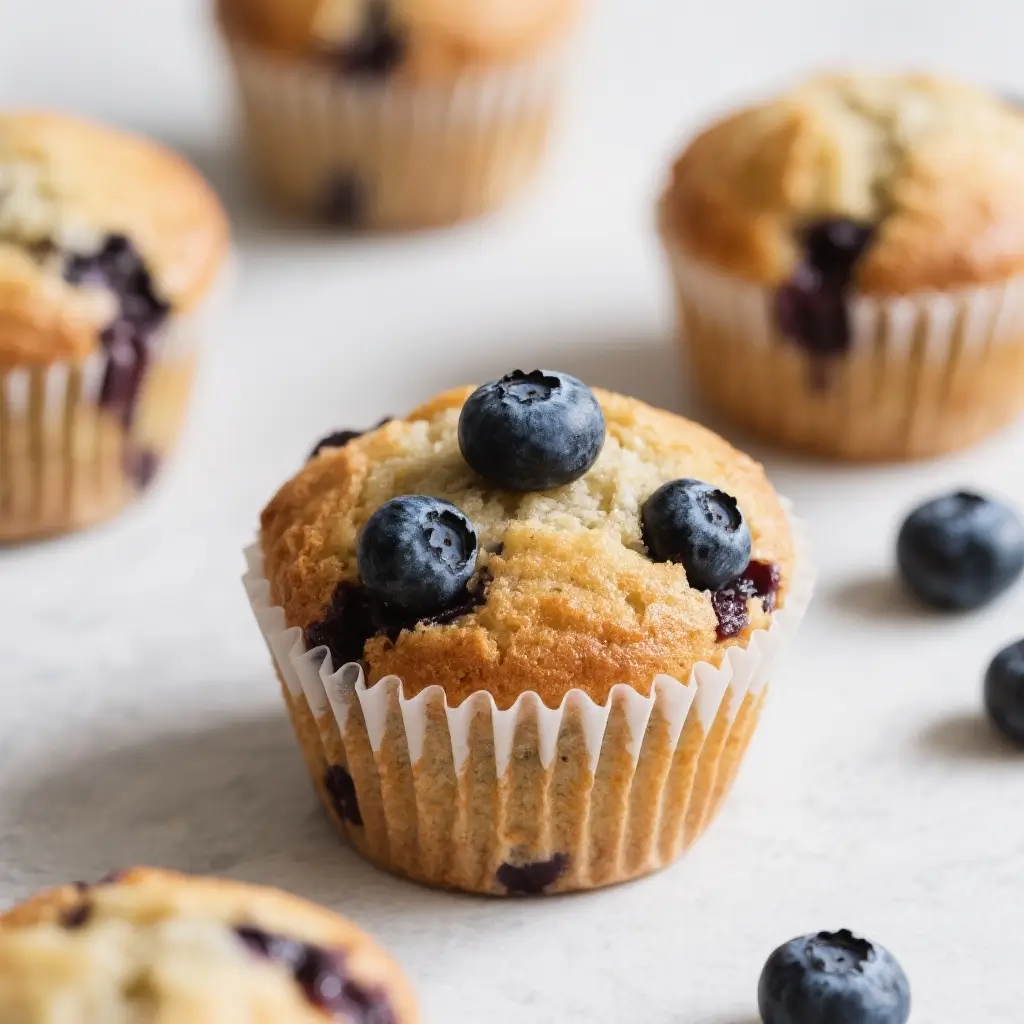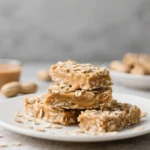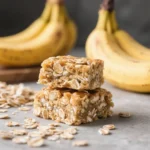Blueberry Muffins: A Classic Favorite with a Burst of Flavor
There’s something irresistibly comforting about the sight and smell of freshly baked blueberry muffins. Whether enjoyed as a weekend breakfast, an afternoon snack, or even as part of a brunch spread, these tender, moist treats have earned their place in kitchens around the world. Packed with juicy bursts of blueberries and a golden, slightly crisp dome, blueberry muffins are more than just a baked good—they’re a symbol of home, warmth, and simple pleasures. In this comprehensive guide, we’ll dive deep into every aspect of making the perfect blueberry muffin—from the history behind the recipe to ingredient breakdowns, step-by-step instructions, health considerations, variations, and tips for achieving bakery-quality results right in your own kitchen.
The History of Blueberry Muffins
The story of blueberry muffins is deeply rooted in American culinary tradition. While muffins themselves date back to 18th-century England—where they were originally savory bread-like items cooked on a griddle—the American version evolved significantly in the 19th century with the advent of chemical leavening agents like baking soda and baking powder. This innovation allowed for quicker, lighter baked goods that could be made without yeast or long rising times.
Blueberries, native to North America, became a natural addition to sweet muffin recipes, especially in New England and Canada, where wild blueberries grow abundantly. The first known printed recipe for blueberry muffins appeared in Miss Parloa’s New Cook Book in 1880, though it was quite different from today’s versions. It wasn’t until the early 20th century, with the commercial cultivation of highbush blueberries by Elizabeth Coleman White and Dr. Frederick Coville, that fresh blueberries became widely available, paving the way for the blueberry muffin as we know it.
By the mid-20th century, blueberry muffins had become a staple in American households, popularized by wartime rationing (as they required less butter and eggs than cakes) and later embraced by the convenience food movement with the rise of boxed muffin mixes. Today, they remain one of the most beloved muffin varieties worldwide, celebrated for their vibrant color, sweet-tart flavor, and ease of preparation.
Ingredients Breakdown: What Makes Blueberry Muffins So Delicious?
The magic of blueberry muffins lies not only in their flavor but in the careful balance of ingredients that create their signature texture and taste. Let’s take a closer look at each component:
- Flour (All-Purpose): Provides structure through gluten formation. All-purpose flour gives a soft yet sturdy crumb, ideal for muffins.
- Sugar (Granulated or Brown): Adds sweetness and aids in browning. Brown sugar can add moisture and a subtle molasses flavor.
- Baking Powder & Baking Soda: Leavening agents that help the muffins rise. Baking powder works with liquid and heat, while baking soda needs acid (like buttermilk or yogurt) to activate.
- Salt: Enhances flavor and balances sweetness.
- Eggs: Bind ingredients together, contribute to structure, and add richness.
- Butter or Oil: Butter adds flavor and a flakier texture; oil keeps muffins moist for longer. Many recipes use a combination of both.
- Milk or Buttermilk: Adds moisture and tenderness. Buttermilk introduces acidity, which reacts with baking soda for extra lift and a slight tang.
- Vanilla Extract: Deepens flavor and provides aromatic complexity.
- Fresh or Frozen Blueberries: The star ingredient! Fresh blueberries offer juiciness; frozen ones (used straight from the freezer) prevent sinking and distribute evenly. Tossing them in flour helps prevent clumping.
- Lemon Zest (Optional): Brightens the flavor profile and complements the blueberries’ natural tartness.
Each ingredient plays a crucial role, and even small changes can impact texture, moisture, and flavor. Understanding their functions allows for confident customization and troubleshooting.
Step-by-Step Recipe: How to Make Perfect Blueberry Muffins
Follow this detailed, foolproof method to bake light, fluffy, and flavorful blueberry muffins every time.
Ingredients
- 2 cups (250g) all-purpose flour
- ½ cup (100g) granulated sugar
- ¼ cup (50g) brown sugar (optional, for deeper flavor)
- 2 teaspoons baking powder
- ½ teaspoon baking soda
- ½ teaspoon salt
- 1 tablespoon lemon zest (from about 1 large lemon)
- 1 cup (240ml) buttermilk (or whole milk + 1 tbsp vinegar)
- ⅓ cup (80ml) vegetable oil or melted unsalted butter, cooled
- 2 large eggs, room temperature
- 1½ teaspoons pure vanilla extract
- 1½ cups (225g) fresh or frozen blueberries (do not thaw if frozen)
- 1–2 tablespoons all-purpose flour (for coating blueberries)
Directions
- Preheat oven to 375°F (190°C). Line a standard 12-cup muffin tin with paper liners or grease lightly with non-stick spray.
- Prepare the blueberries: In a small bowl, toss the blueberries with 1–2 tablespoons of flour until lightly coated. This prevents them from sinking to the bottom during baking. Set aside.
- Mix dry ingredients: In a large mixing bowl, whisk together the flour, granulated sugar, brown sugar (if using), baking powder, baking soda, salt, and lemon zest until well combined.
- Combine wet ingredients: In a separate medium bowl, whisk together the buttermilk, oil (or melted butter), eggs, and vanilla extract until smooth and emulsified.
- Mix wet and dry ingredients: Pour the wet mixture into the dry ingredients. Use a rubber spatula or wooden spoon to gently fold the batter together. Mix only until the dry ingredients are just incorporated—do not overmix. A few lumps are fine; overmixing leads to tough, dense muffins due to gluten development.
- Add blueberries: Gently fold in the floured blueberries, being careful not to crush them. Stir just until evenly distributed.
- Fill muffin cups: Divide the batter evenly among the 12 muffin cups, filling each about ¾ full. For tall domes, you can slightly overfill the first six cups, then continue with the rest.
- Bake: Place the muffin tin in the center of the preheated oven. Bake for 18–22 minutes, or until the tops are golden brown and a toothpick inserted into the center of a muffin comes out clean (a few moist crumbs are okay; melted blueberry juice may look wet).
- Cool: Remove the muffins from the oven and let them cool in the pan for 5 minutes. Then transfer them to a wire rack to cool completely, or enjoy warm with a pat of butter.
Optional Crumb Topping: For an extra touch, sprinkle each muffin with a streusel topping before baking. Combine ¼ cup flour, ¼ cup brown sugar, 2 tablespoons cold butter, and ½ teaspoon cinnamon. Crumble and press lightly onto the batter before baking.
Tips for the Best Blueberry Muffins
- Don’t overmix the batter. Overmixing develops gluten, leading to chewy, tough muffins. Mix until just combined.
- Use room temperature ingredients. Eggs and buttermilk at room temperature blend more easily, creating a smoother batter and better rise.
- Coat blueberries in flour. This helps suspend them in the batter and prevents sinking.
- Use frozen blueberries straight from the freezer. They hold their shape better and don’t bleed color as much during baking.
- Fill muffin cups generously. To get the classic high-domed top, fill cups nearly full. The batter will rise beautifully.
- Rotate the pan halfway through baking. Ovens often have hot spots; rotating ensures even browning.
- Check for doneness early. Start checking at 18 minutes. Overbaking dries out muffins.
- Cool properly. Let muffins rest in the pan briefly to set, then transfer to a rack to avoid sogginess.
- Store correctly. Keep in an airtight container at room temperature for up to 3 days, or freeze for up to 3 months.
Variations and Customizations
Once you’ve mastered the basic recipe, feel free to experiment! Here are some delicious variations to try:
- Lemon Blueberry Muffins: Add 2 tablespoons of fresh lemon juice to the wet ingredients and increase zest to 1½ tablespoons for a bright, citrusy twist.
- Whole Wheat Blueberry Muffins: Substitute half or all of the all-purpose flour with whole wheat flour for a nuttier, heartier texture. Add an extra tablespoon of liquid if needed.
- Oatmeal Blueberry Muffins: Replace ½ cup of flour with old-fashioned oats and add a pinch of cinnamon for a cozy, granola-like flavor.
- Gluten-Free Blueberry Muffins: Use a 1:1 gluten-free flour blend and ensure all other ingredients are certified gluten-free.
- Vegan Blueberry Muffins: Replace eggs with flax eggs (2 tbsp ground flaxseed + 6 tbsp water), use plant-based milk with vinegar instead of buttermilk, and swap butter for coconut oil or vegan margarine.
- Almond Blueberry Muffins: Add ½ cup chopped toasted almonds and ½ teaspoon almond extract for a marzipan-like depth.
- Cinnamon Streusel Blueberry Muffins: Top with a cinnamon-sugar crumb topping made from flour, brown sugar, cold butter, and ground cinnamon.
- Double Blueberry Muffins: Add ½ teaspoon blueberry extract or a few drops of blueberry flavoring to intensify the berry flavor.
- Low-Sugar or Sugar-Free: Reduce sugar by ¼ cup or use a sugar substitute like erythritol or monk fruit for a diabetic-friendly option.
- Jam-Filled Muffins: Drop ½ teaspoon of blueberry jam into the center of each muffin before baking for a gooey surprise.
Health Considerations and Nutritional Value
While blueberry muffins are undeniably delicious, their nutritional profile can vary widely depending on ingredients and portion size. Store-bought or café-style muffins can be surprisingly high in sugar, fat, and calories—sometimes exceeding 500 calories each!
Here’s an approximate nutritional breakdown per homemade muffin (based on 12 servings, using the recipe above):
- Calories: ~220–250
- Total Fat: 8–10g (mostly from oil or butter)
- Saturated Fat: 2–3g
- Carbohydrates: 35–38g
- Sugars: 15–18g (natural and added)
- Fiber: 1–1.5g
- Protein: 3–4g
- Sodium: 200–250mg
Health Benefits:
- Blueberries: Rich in antioxidants (especially anthocyanins), vitamin C, vitamin K, and fiber. Linked to improved brain health, reduced inflammation, and heart health.
- Lemon Zest: Contains flavonoids and vitamin C, aiding digestion and boosting immunity.
- Whole Grains (if used): Increase fiber content, supporting gut health and sustained energy.
Ways to Make Healthier Muffins:
- Reduce sugar by 25–30% without sacrificing flavor.
- Replace half the oil with unsweetened applesauce or mashed banana.
- Use whole wheat pastry flour or oat flour for added fiber.
- Boost nutrition by adding chia seeds, flaxseeds, or shredded zucchini.
- Avoid excessive toppings or glazes.
- Bake mini muffins to control portion size.
Frequently Asked Questions (FAQ)
Q: Why do my blueberries sink to the bottom?
A: This usually happens when the berries aren’t coated in flour or when the batter is too thin. Coating blueberries in flour and avoiding overmixing can prevent sinking.
Q: Can I use frozen blueberries?
A: Yes! Use them straight from the freezer—don’t thaw. Thawed berries release too much juice and can turn the batter purple.
Q: How do I store blueberry muffins?
A: Store cooled muffins in an airtight container at room temperature for 2–3 days. For longer storage, freeze in a sealed bag for up to 3 months. Reheat in a toaster oven or microwave.
Q: Can I make this recipe into a loaf?
A: Absolutely. Pour the batter into a greased 9×5-inch loaf pan and bake at 350°F (175°C) for 50–60 minutes, or until a toothpick comes out clean.
Q: Why didn’t my muffins rise properly?
A: Possible causes include expired leavening agents, overmixing, underfilling the cups, or opening the oven too early. Always check the freshness of baking powder/soda.
Q: Can I use milk instead of buttermilk?
A: Yes, but the texture and rise won’t be quite as tender. To make a buttermilk substitute, add 1 tablespoon of vinegar or lemon juice to 1 cup of milk and let sit for 5 minutes.
Q: Are blueberry muffins healthy?
A: Homemade versions with moderate sugar and healthy fats can be part of a balanced diet. However, they are best enjoyed in moderation due to their carbohydrate and sugar content.
Q: Can I double the recipe?
A: Yes, but mix in batches to ensure even blending. Doubling in one bowl may lead to uneven distribution of ingredients.
Summary
Blueberry muffins are a timeless treat that combine simplicity, comfort, and vibrant flavor in every bite. With the right ingredients, technique, and a few smart tips, you can create bakery-quality muffins at home that are moist, fluffy, and bursting with juicy blueberries.










